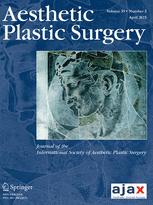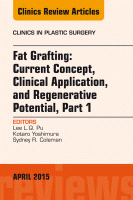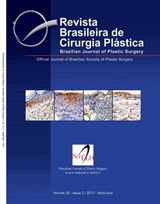Expósito A, Escobar H, Tamayo A, González JS
Acta Médica. 2021; Vol. 22, No. 3
 La mastoplastia de aumento es uno de los procedimientos de cirugía plástica más comunes en aquellas mujeres que no están satisfechas con el tamaño de sus mamas. Fue el cirujano plástico Hoeler,quien en el año 1973 realizó el primer aumento mamario por vía axilar. La ausencia de cicatrices en la región mamaria y el mejor control en el posicionamiento del surco inframamario están entre las principales ventajas de esta técnica quirúrgica. El objetivo del estudio fue valorar los resultados de la mastoplastia de aumento por vía axilar sin endoscopio.
La mastoplastia de aumento es uno de los procedimientos de cirugía plástica más comunes en aquellas mujeres que no están satisfechas con el tamaño de sus mamas. Fue el cirujano plástico Hoeler,quien en el año 1973 realizó el primer aumento mamario por vía axilar. La ausencia de cicatrices en la región mamaria y el mejor control en el posicionamiento del surco inframamario están entre las principales ventajas de esta técnica quirúrgica. El objetivo del estudio fue valorar los resultados de la mastoplastia de aumento por vía axilar sin endoscopio.
 La mama con disminución de volumen y ptósica requiere un procedimiento doble que consiste, en la mayoría de los casos, en aumento con implante y ajuste de los tejidos al nuevo tamaño. Esta es una realidad que sienten los cirujanos plásticos con experiencia y mucho más aquellos que comienzan a transitar por la especialidad.
La mama con disminución de volumen y ptósica requiere un procedimiento doble que consiste, en la mayoría de los casos, en aumento con implante y ajuste de los tejidos al nuevo tamaño. Esta es una realidad que sienten los cirujanos plásticos con experiencia y mucho más aquellos que comienzan a transitar por la especialidad.
 Late haematomas and seromas (≥4 months postoperatively) in breasts with silicone prosthesis have been reported. Since 2001, there have only four patients with such delayed complication visiting our hospitals. The purpose of this literature review and our case presentation is to have more understanding about the clinical symptoms, surgical managements and relationship with implants for this late complication.
Late haematomas and seromas (≥4 months postoperatively) in breasts with silicone prosthesis have been reported. Since 2001, there have only four patients with such delayed complication visiting our hospitals. The purpose of this literature review and our case presentation is to have more understanding about the clinical symptoms, surgical managements and relationship with implants for this late complication. Simultaneous breast augmentation and mastopexy is a common procedure often considered to be one of the most difficult cosmetic breast surgeries. One-stage augmentation mastopexy was initially described more than 50 years ago. The challenge lies in the fact that the surgery has multiple opposing goals: to increasing the volume of a breast, enhance the shape, and simultaneously decrease the skin envelope. Successful outcomes in augmentation can be expected with proper planning, technique, and patient education. This article focuses on common indications for simultaneous augmentation mastopexy, techniques for safe and effective combined procedures, challenges of the procedure, and potential complications.
Simultaneous breast augmentation and mastopexy is a common procedure often considered to be one of the most difficult cosmetic breast surgeries. One-stage augmentation mastopexy was initially described more than 50 years ago. The challenge lies in the fact that the surgery has multiple opposing goals: to increasing the volume of a breast, enhance the shape, and simultaneously decrease the skin envelope. Successful outcomes in augmentation can be expected with proper planning, technique, and patient education. This article focuses on common indications for simultaneous augmentation mastopexy, techniques for safe and effective combined procedures, challenges of the procedure, and potential complications. Late seromas after augmentation mammaplasty are uncommon, can manifest without a defined cause, and can be treated by implant removal or replacement. This study aimed to analyze three cases of this complication that occurred 1-10 years postoperatively and were treated differently.
Late seromas after augmentation mammaplasty are uncommon, can manifest without a defined cause, and can be treated by implant removal or replacement. This study aimed to analyze three cases of this complication that occurred 1-10 years postoperatively and were treated differently.




 Sitio web publicado el
Sitio web publicado el
Los lectores comentan